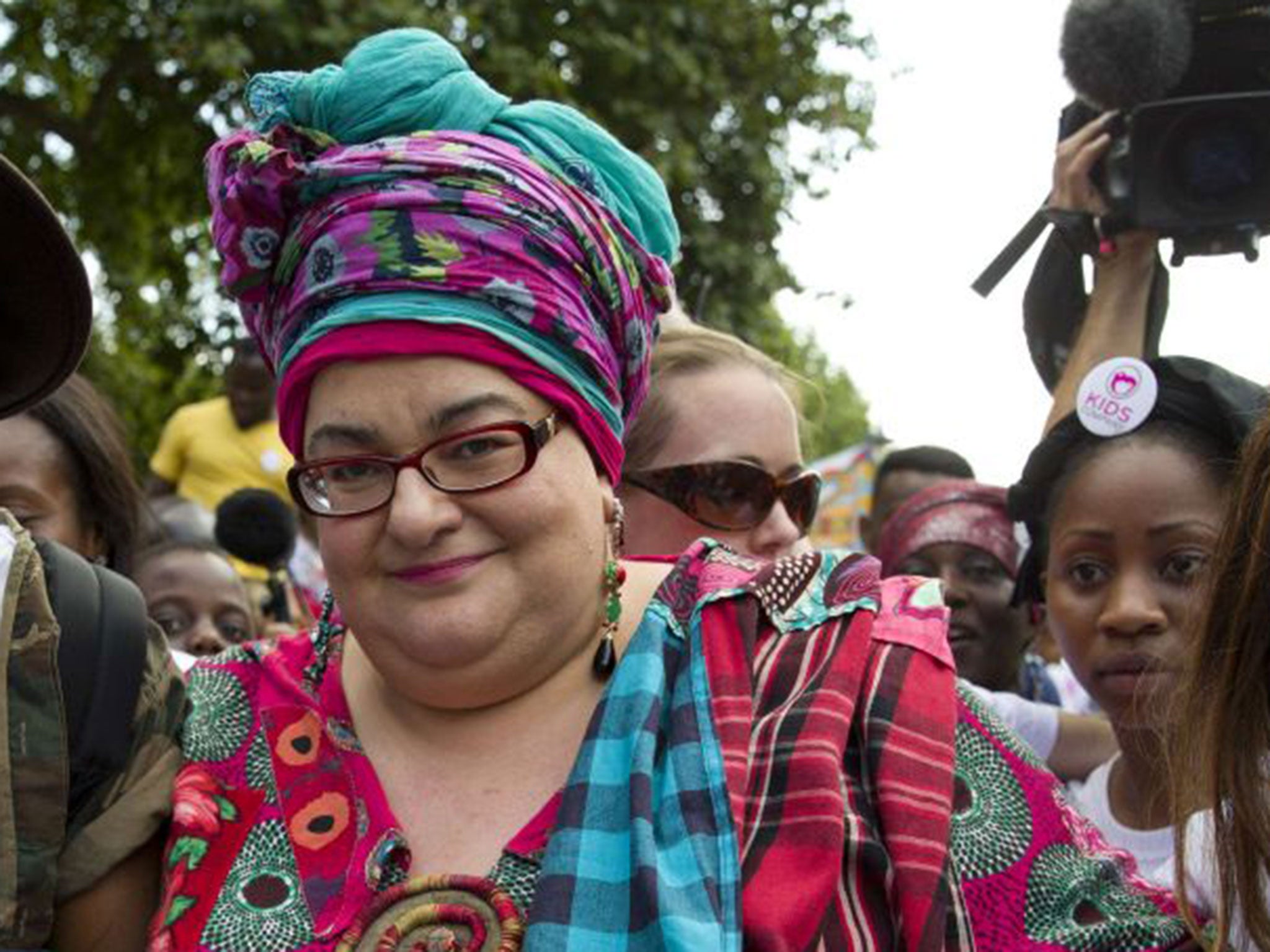I gave money to Kids Company's Camila. She's still the best fundraiser in Britain
Plus: The sky's the limit if we want London to walk tall


The trashing of Camila Batmanghelidjh continues. How can someone go from saint to sinner in just a matter of weeks? The rise and fall of Kids Company is a modern morality play, which can only end in tragedy. Ironically, the embattled head of the now-defunct children’s charity is being demolished by the same gang she successfully used to drum up support for her cause: the media.
I experienced Camila’s unique powers of persuasion at first hand. After meeting her a few years ago, I went home and immediately posted her a large cheque – something I’d never done before. In the flesh, the woman had more charisma than any pop star. It’s easy to see how she could enter any room and charm the pants off a bunch of grey men in suits.
This week the National Audit Office published a report into the finances of the charity, which received about £46m from central and local government over 15 years, a far bigger allocation of funds than any other organisation working in the same field. You might question why the young people of Lambeth and Bristol got such a big slice of the pie – a fifth of all the cash from the Department for Education Youth Sector Development Fund – which was meant to help 43 other charities working in the rest of the UK. Even so, I can’t find it in my heart to hate or even criticise Camila, although there’s clearly no filter operating between her turbaned brain and her flapping mouth.
In the latest outburst, she proudly claims to have “blackmailed” politicians, including her pal Dave, for cash, threatening closure and redundancies on an annual basis. Her tactics worked brilliantly: whenever a request for emergency funds was refused in Whitehall, she wrote a letter straight to the top. She regularly asked for eye-watering sums – in 2012 she begged for £10m a year to continue and accepted £8m – and over 15 years her requests for cash were never turned down.
Camila might be an organisational divot, but as a fundraiser this woman is a genius. As late as July this year, she received an emergency cheque for £3m when two cabinet officials (Oliver Letwin and Matthew Hancock) overruled civil servants. Even with this funding, the charity collapsed within weeks. As a former trustee of the Science Museum, I know all about the grovelling process charitable organisations have to embark on for government funding: the nit-picking, pruning, preparing of detailed accounts, and the wearing of hair shirts to extract meagre crumbs of public money – even less since George Osborne instituted swingeing cuts.
How Camila managed to extract millions when her organisation was run in such a dysfunctional (or more “alternative”) way is extremely revealing. Put simply, she was successful precisely because she really did blackmail middle-class civil servants and politicians over her work with the difficult and disadvantaged kids they would never normally meet. She mopped up the mess for these politicians, plugging a gap which social services couldn’t reach in deprived inner city areas.
The vast majority of her clients were black – kids who always look good in photos when politicians are trying to show how socially aware they are. Of course, her accounts would have been audited, as all charities are. But whether she was asked to measure success and give progress reports in the same way as other charitable organisations is an important question. In my experience, to obtain government funding, a charity has to demonstrate its reach through the number of service users it has or education programmes it provides, and its results have to be calculated too. Camila could argue that her kids were hard to track, and measuring success in conventional terms was inappropriate if you are buying a kid a pair of shoes or giving them money for food.
Whitehall had 15 years to insist Kids Company install better governance, to inspect the board of trustees and to approve senior appointments (all of which happened regularly during my time at the Science Museum). So the National Audit Office report tells us more about the failings of Whitehall than any wrongdoing on the part of Batmanghelidjh. They handed over £46m of public funds without ever asking her to assume a more strategic role. If I were Oxfam or Barnardo’s, I would be hiring Camila like a shot. She’s still the best fundraiser in Britain.
The sky’s the limit if we want London to walk tall
Campaigners worry that London’s growing numbers of skyscrapers are ruining the unique character of the city, that the demand for more housing and office space would be better met in mid-rise developments. Renzo Piano, the architect who designed the Shard, the tallest building in the UK, has just unveiled his designs for a 224m tower in Paddington, part of plans to revamp the station and provide more housing – and I can’t agree with his critics.
Last weekend, I visited Piano’s new Whitney Museum in New York, situated downtown in the Meatpacking district, between the Hudson River and the High Line walkway. Over eight floors with four large terraces, the building’s three upper levels are linked by a stylish series of exterior steel gantries. It makes for an exhilarating experience – we could certainly do with a museum of that quality in London.
In the summer, I visited Piano’s tiny museum for the Agnelli family, built on top of the former Fiat factory, overlooking the test track where The Italian Job was filmed. Perched like a steel bird of prey stretching its wings, the Pinacoteca at Lingotto houses just 25 modern masterpieces. London needs buildings as bold and stylish as this. Mid-rise could easily mean mediocre.
Why the writing’s on the wall for today’s teenagers
Some of my most treasured possessions are handwritten, ranging from begging love letters to rants from irate readers. I love receiving a handwritten note, maybe because I was brought up to believe writing a letter was a sign of good manners. Texting a thank you is just not the same, is it?
Sadly, a third of today’s teenagers have never written a letter by hand and don’t even own a pen. Texting and social media have eliminated the art of slow communication, where it takes a bit more time to express what you feel. Of the young people who have written a letter, a third said they were ordered to do so by parents or teachers. With the death of letter writing, handwriting has suffered too. Without wishing to boast, mine is excellent because I was forced to spend hours after school carefully writing, following patterns on cards. You weren’t allowed to take the 11- plus in pencil, and I risked blood poisoning from inky fingers to achieve perfect script.
Knowing what bosses want is the name of the game
David Cameron has endorsed a campaign urging employers to assess job applications on a “name blind” basis (with applicants’ names removed) in the hope of recruiting from a wider gene pool into the Civil Service, the NHS, the BBC and universities. This might get a better shortlist, but as long as parents insist on calling their kids fantasy names, they are giving them an unnecessary disadvantage, just as I had to work past my estuary accent. One reason for race and gender imbalance in recruitment is applicants not understanding what makes you employable. Removing names won’t make much difference.



Join our commenting forum
Join thought-provoking conversations, follow other Independent readers and see their replies